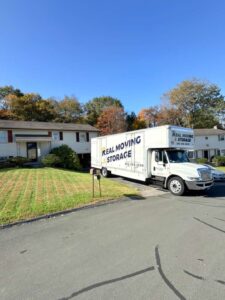Get a Free Estimate Today!
Quick and Efficient Packing Tips for Your Next Move
Packing is one of the most time-consuming parts of moving, but a proper strategy can make the process smooth, organized, and stress-free. By planning early, decluttering smartly, and using effective packing techniques, you can ensure your belongings stay protected and your move becomes significantly easier. This comprehensive guide will help you prepare like a pro and avoid common packing mistakes.

1. Start Early and Create a Detailed Packing Timeline
Beginning the packing process early gives you more time to organize, gather supplies, and reduce last-minute pressure. A structured timeline helps you stay on track and prevents unnecessary clutter or confusion.
Suggested Packing Timeline
- 4 weeks before: Start with storage spaces—attic, basement, or garage.
- 3 weeks before: Pack seasonal décor and items not used daily.
- 2 weeks before: Focus on books, extra kitchenware, and linens.
- 1 week before: Pack clothing, electronics, and remaining essentials.
- Final days: Prepare an essentials box and close all remaining boxes.
A clear timeline allows for manageable pacing and a hassle-free moving day.
2. Declutter Before You Pack Anything
Reducing the number of items before packing saves time, space, and overall moving costs. Decluttering also gives you a fresh start in your new home.
Items to Consider Letting Go
- Outgrown or unworn clothing
- Old magazines, books, papers
- Expired beauty or skincare products
- Non-functional electronics
- Extra or unused household items
Donate, recycle, or sell items that still hold value. Your moving process immediately becomes lighter, cleaner, and faster.
3. Gather the Right Packing Supplies (Use Quality Materials)
Using strong, high-quality packing materials helps protect fragile items and prevents damage during transportation.
Must-Have Packing Materials
- Durable cardboard boxes
- Bubble wrap and foam sheets
- Packing tape and dispensers
- Stretch wrap for furniture
- Moving blankets
- Permanent markers for labeling
- Wardrobe boxes for garments
Having everything ready ahead of time ensures steady progress.
4. Pack Room-by-Room for Better Control
A room-by-room approach keeps the process organized and allows you to unpack more efficiently in your new home.
Room-Specific Packing Tips
Kitchen
- Wrap plates vertically
- Use dividers for glassware
- Secure knives and sharp tools
Bedroom
- Roll clothes for space-saving efficiency
- Use vacuum-seal bags for bedding
- Organize jewelry in small pouches
Living Room
- Wrap electronics in soft cloths
- Label cords clearly
- Use protective padding for art and frames
Bathroom
- Seal liquid bottles with tape
- Pack toiletries separately
- Remove expired items
This method gives structure to the packing process and reduces confusion.
5. Use Smart Packing Techniques for Maximum Space
Efficient packing is about balancing protection and space optimization.
Helpful Techniques
- Pack heavy items in small boxes
- Place lighter items on top
- Fill gaps with towels or soft fabrics
- Reinforce box bottoms with extra tape
- Avoid overloading boxes
These small steps maintain box durability and protect your belongings.
6. Label Every Box Clearly
Clear labeling makes unpacking faster and helps movers handle your items safely.
Labeling Tips
- Write the room name on each side
- Include a brief description of contents
- Mark fragile items
- Use color-coded labels for each room
- Number boxes for quick tracking
Proper labeling prevents confusion and saves hours during unpacking.
7. Pack a Fully Prepared Essentials Box
An essentials box ensures comfort and convenience during your first night in your new home.
Items to Include
- Toiletries
- Medications
- Chargers and power banks
- Towels and bedsheets
- A change of clothes
- Important documents
- Light snacks and water
- Basic tools
Keep this box easily accessible during the move.
8. Time-Saving Packing Shortcuts
Small hacks can dramatically speed up your packing timeline:
- Keep clothes in drawers and wrap them securely
- Use suitcases for heavy items
- Group small items in zip-lock bags
- Leave clothes on hangers and move them in wardrobe boxes
- Use towels or blankets to cushion fragile items
These shortcuts reduce packing time without compromising safety.
9. Consider Professional Movers for Added Convenience
Professional movers bring expertise, packing materials, and advanced techniques that minimize the risk of damage. They also save time, especially during long-distance relocations.
For example, if you’re planning a major relocation such as a smooth transition to South Carolina from Connecticut, you can explore professional long-distance moving services like this one: Check affordable long-distance moving options here: moving from Connecticut to South Carolina
Professional teams handle packing, loading, furniture protection, and transportation—giving you peace of mind throughout the journey.
If your move involves staying within Connecticut, high-quality local moving assistance is also available here: Local relocation help in Fairfield County: moving services in Fairfield
Final Thoughts
Packing for a move doesn’t need to be stressful. With early planning, smart techniques, and the right materials, you can make the entire process faster, easier, and more organized. Break tasks into manageable steps, stay consistent, and take advantage of time-saving shortcuts. A smooth packing experience sets the foundation for a stress-free move into your new home.